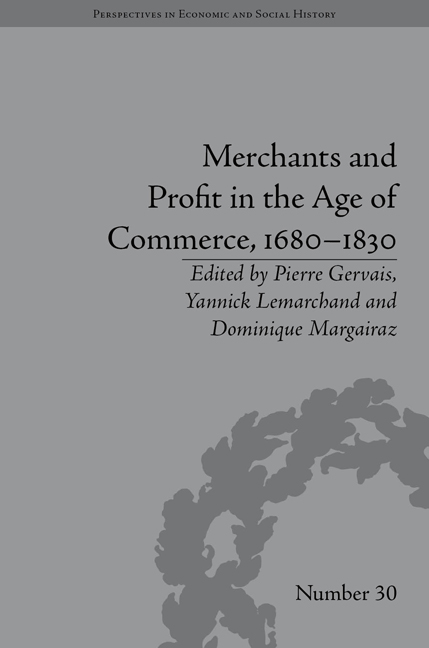Book contents
- Frontmatter
- CONTENTS
- Acknowledgements
- List of Contributors
- List of Figures and Tables
- Introduction: The Many Scales of Merchant Profit: Accounting for Norms, Practices and Results in the Age of Commerce
- Part I Understanding Merchant Transactions
- Part II The Credit Nexus and its Pitfalls
- Part III Beyond Price Signals: The Institutional Framework
- Part IV Diversification and Risk Management
- Conclusion: Reorienting Early Modern Economic History: Merchant Economy, Merchant Capitalism and the Age of Commerce
- Notes
- Index
Introduction: The Many Scales of Merchant Profit: Accounting for Norms, Practices and Results in the Age of Commerce
- Frontmatter
- CONTENTS
- Acknowledgements
- List of Contributors
- List of Figures and Tables
- Introduction: The Many Scales of Merchant Profit: Accounting for Norms, Practices and Results in the Age of Commerce
- Part I Understanding Merchant Transactions
- Part II The Credit Nexus and its Pitfalls
- Part III Beyond Price Signals: The Institutional Framework
- Part IV Diversification and Risk Management
- Conclusion: Reorienting Early Modern Economic History: Merchant Economy, Merchant Capitalism and the Age of Commerce
- Notes
- Index
Summary
The present collection is the result of a concerted, negotiated effort between all its contributors to better understand merchant profit (or should we say morebroadly market-based profit?) in the early modern period. The question may seem meaningless, since profit is at first glance one of these self-evident notions which everybody naturally understands. Bring in some capital, apply it to some activity, harvest whatever monetary value is generated thereby, and voilà! Some profit is made, usually summarized by the simple subtraction of the original layout, plus liabilities and costs incurred, including opportunity costs and depreciation ideally, from the final proceeds including whatever assets are acquired. Accounting details may differ, but the basic mechanism is fairly transparent. It is often presented as such in the literature, with most historical accounts of merchants in the early modern era assuming that when a profit was made here and there, it was hardly necessary to detail how it was made.
This inquiry was born out of the hypothesis that reality was more complex, that a close study of merchant practices, focused on the various constitutive parts of profits, would perhaps lead to a historical narrative in which early modern merchant profit in particular, and therefore early modern merchant practice in general, would take a more historicized colouration.
- Type
- Chapter
- Information
- Publisher: Pickering & ChattoFirst published in: 2014



